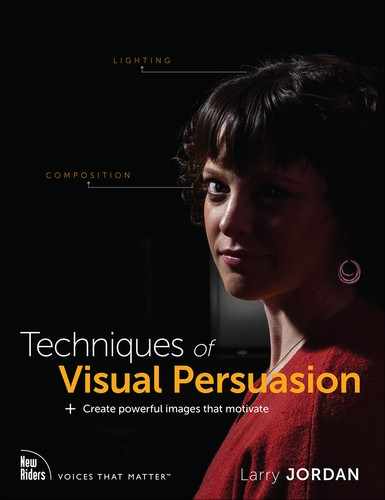0%
32Chapters
0-1Hours read
0kTotal Words
Book Description
In todays remote-oriented, work-from-home world, clear, persuasive communication is more important than ever. People dont read, they skim. Persuasive images that attract, hold and motivate an audience are essential.
Techniques of Visual Persuasion shows how to use images to grab the viewers attention long enough to powerfully share a message and move them to action. These techniques help you improve:
• Persuasive techniques
• Communication skills
• Business presentations
• Photos and images
• Videos and motion graphics
To communicate clearly and effectively today, you need to consider how a message looks, as well as what a message says. This book is essential reading for anyone who wants to create change.
Table of Contents
- Cover Page
- Title Page
- Copyright Page
- Dedication Page
- Acknowledgments
- About the Author
- Contents
- Preface
- Section 1: Persuasion Fundamentals
- Chapter 1. The Power of Persuasion
- Chapter 2. Persuasive Visuals
- Chapter 3. Persuasive Writing
- Chapter 4. Persuasive Fonts
- Chapter Goals
- A Quick History of Type
- The Design of Type
- Serif Fonts: The Voice of Tradition
- Sans Serif: The Voice of the Future
- Script Fonts: Handwriting for Computers
- Blackletter: Extreme Script
- Monospace: Return of the Typewriter
- Specialty—Creativity Runs Amok
- Font Techniques
- Choosing the Right Fonts
- Key Points
- Practice Persuasion
- Persuasion P-O-V
- Chapter 5. Persuasive Colors
- Section 2: Persuasive Still Images
- Chapter 6. Persuasive Presentations
- Chapter 7. Persuasive Photos
- Chapter 8. Edit and Repair Still Images
- Chapter 9. Create Composite Images
- Chapter Goals
- Creating a New Photoshop Document
- Adding and Formatting Text
- Layers vs. Background
- Scaling Explained
- Manipulating Images Using Free Transform
- Place vs. Open
- Selections Create Magic
- Filters and Effects
- Choosing a Color
- Adding a Background Behind a Layer
- Blend Modes
- One Last Effect
- Key Points
- Practice Persuasion
- Persuasion P-O-V
- Section 3: Persuasive Moving Images
- Chapter 10. Video Pre-Production
- Chapter 11. Create Compelling Content with Interviews
- Chapter 12. Sound Improves the Picture
- Chapter 13. Video Production
- Chapter 14. Video Post-Production
- Chapter Goals
- What Is “Good” Editing?
- Find the Rhythm
- An Editing Workflow
- Define Terms
- Step 1: Plan the Project
- Step 2: Gather the Media
- Step 3: Organize the Media
- Step 4: Build the Story
- Step 5: Organize the Story in the Timeline
- Step 6: Trim the Story
- Step 7: Add Transitions
- Step 8: Add Text and Effects
- Step 9: Create the Final Audio Mix
- Step 10: Finalize the Look and Colors
- Step 11: Output the Project
- Step 12: Archive the Project
- Key Points
- Practice Persuasion
- Persuasion P-O-V
- Chapter 15. Motion Graphics: Make Things Move
- Closing Thoughts
- Bibliography
- Index
- Code Snippets
- Chapter 16. Advanced Motion: Particles, Paths, and Perspective
- Appendix: Keyboard Shortcuts
